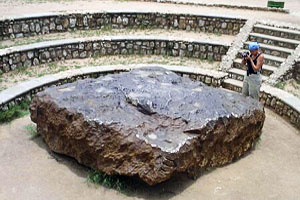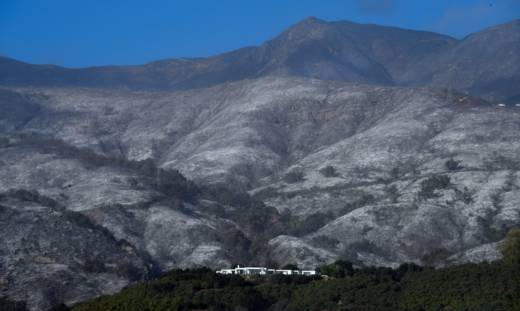 The Hoba meteorite in Namibia, Africa, the largest known
The Hoba meteorite in Namibia, Africa, the largest known
meteorite found; approximately the size of 2008 TC3 before
it burned up in our atmosphere.News Flash! Asteroid 2008 TC3, on a collision trajectory with Earth, made a meteoric atmospheric entry into the skies above Sudan, Central Africa Tuesday morning, October 7th (local time-about 7:46 PM PDT). Entering the atmosphere at a speed of 12.8 kilometers per second, it exploded with the force of a low-level nuclear bomb...
Wait a moment... an asteroid you say? Hitting the Earth? Isn't that supposed to spell some kind of disaster, such as Dino-slaughter? Isn't that something we send people like Bruce Willis and Clint Eastwood to deal with before it becomes a problem down here on Earth?
Okay, so Asteroid 2008 TC3 wasn't an Earth-killer, but rather a crowd-thriller. It wasn't miles across-not even tens of meters across. It was, perhaps, a few meters in size, similar in volume to mid-size car. In fact, it didn't even hit the Earth's surface, but vaporized in the atmosphere.
Sounds a bit anticlimactic-and that's not the half of it. It's not even a rare event! Objects of this size are believed (and sometimes observed) to enter Earth's atmosphere a few times each year. So what's the blog deal?
The blog deal is this: this is the first time that an object this size has been detected approaching the Earth a significant period of time before actually impacting-in this case, about a day. 2008 TC3 was detected by the Mount Lemmon telescope in Arizona on Monday. The detection was reported to the Minor Planet Center, which collects such observations from observatories large and small (including Chabot Space & Science Center) in order to track and predict possible Earth impactors. In turn, the MPC alerted NASA of the impending impact.
